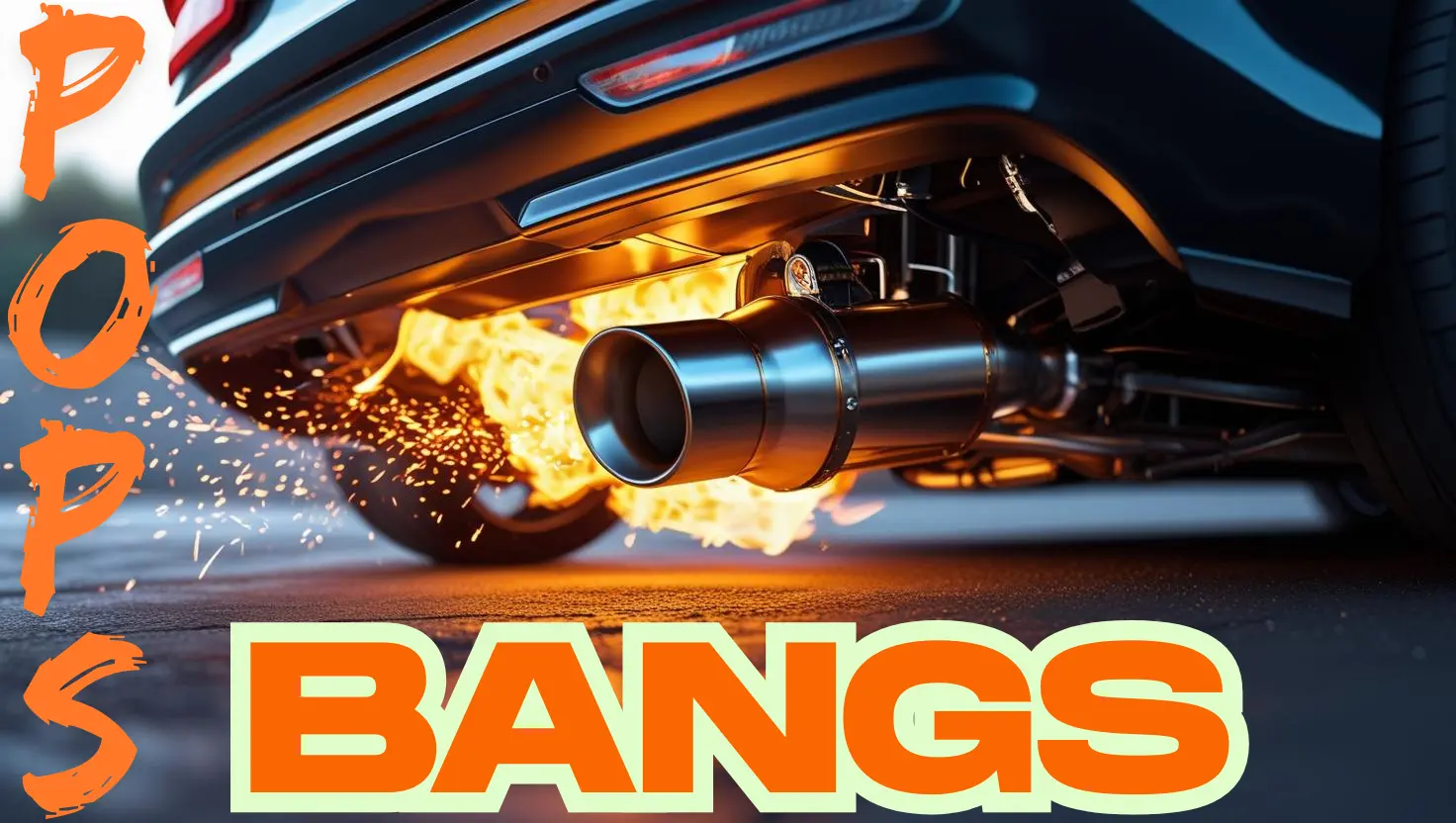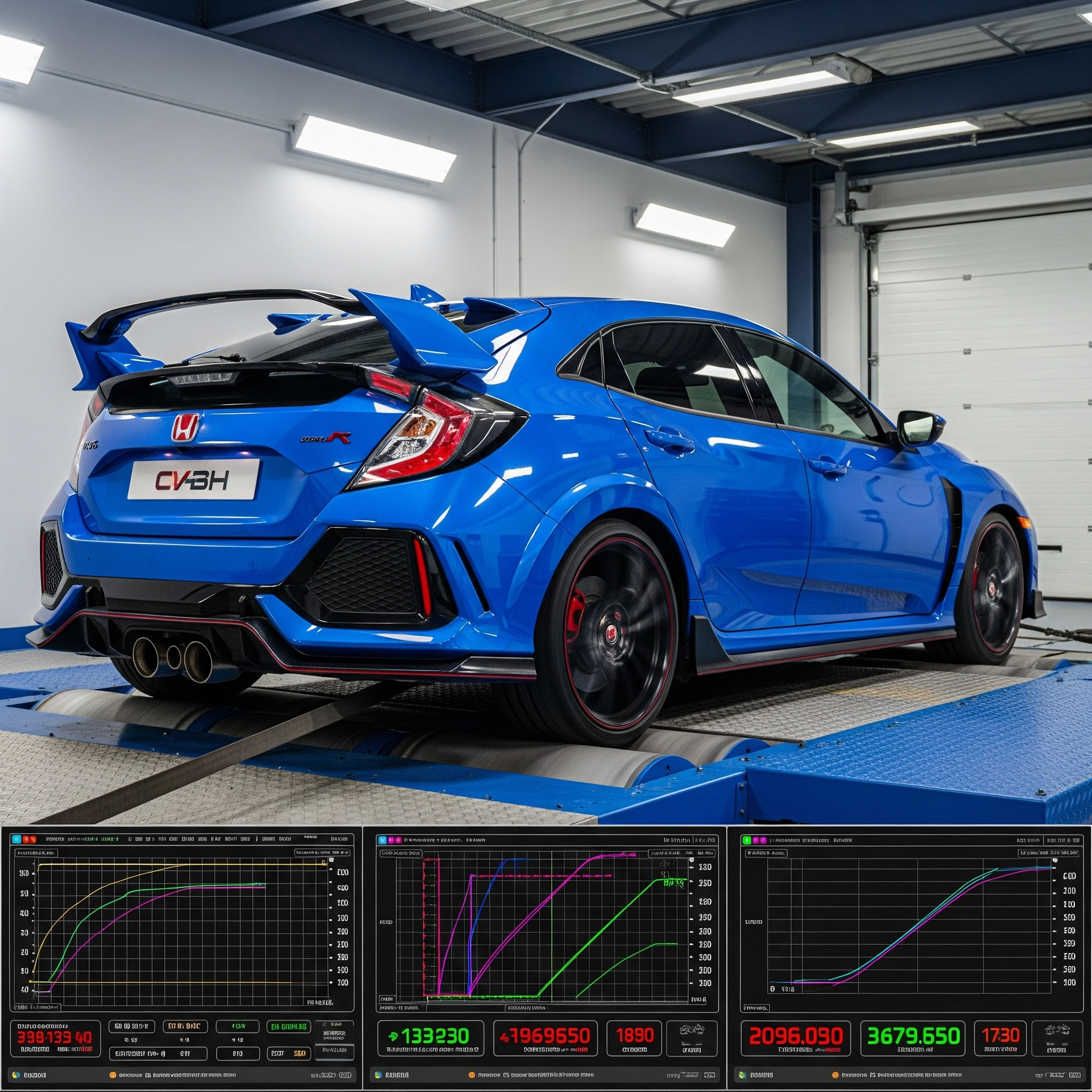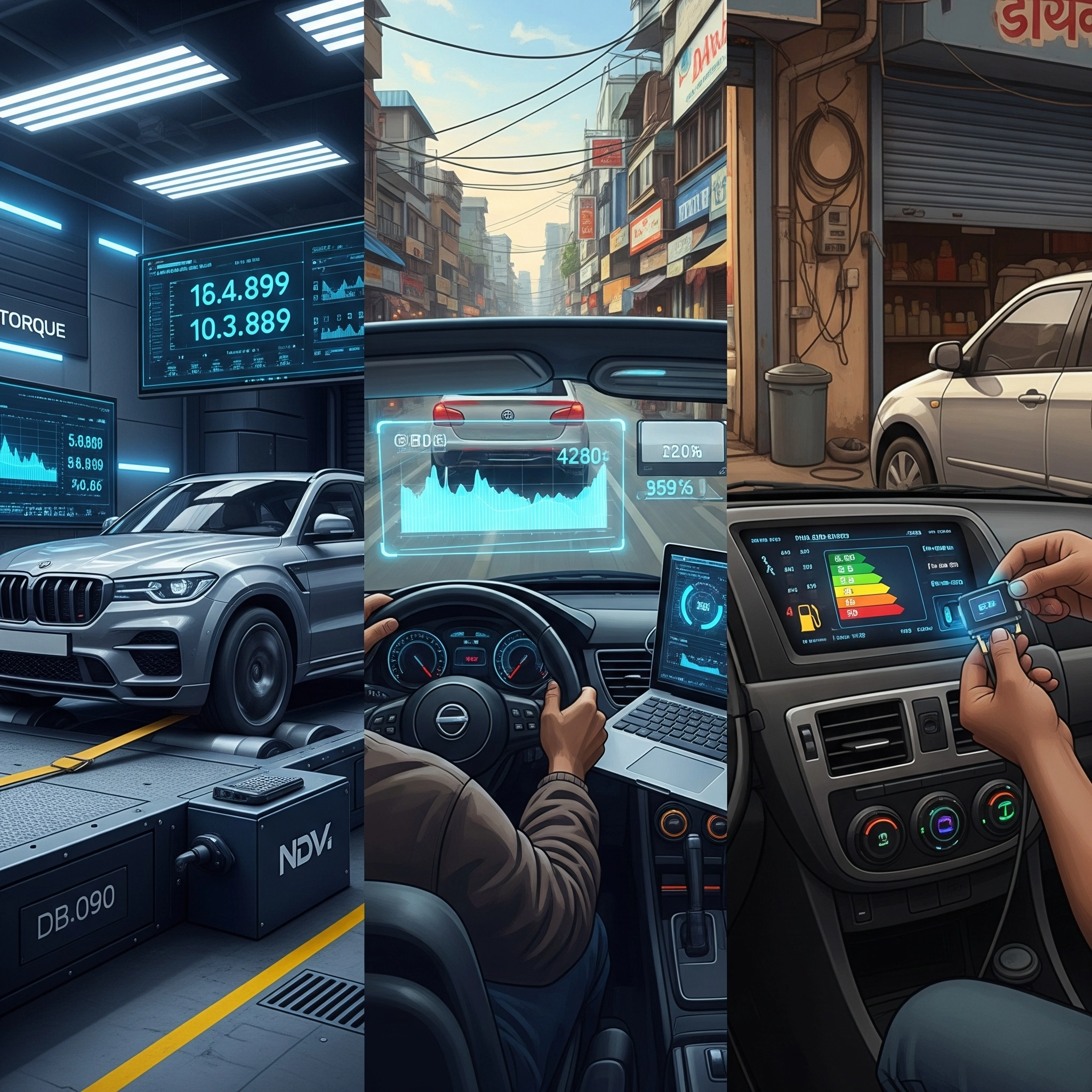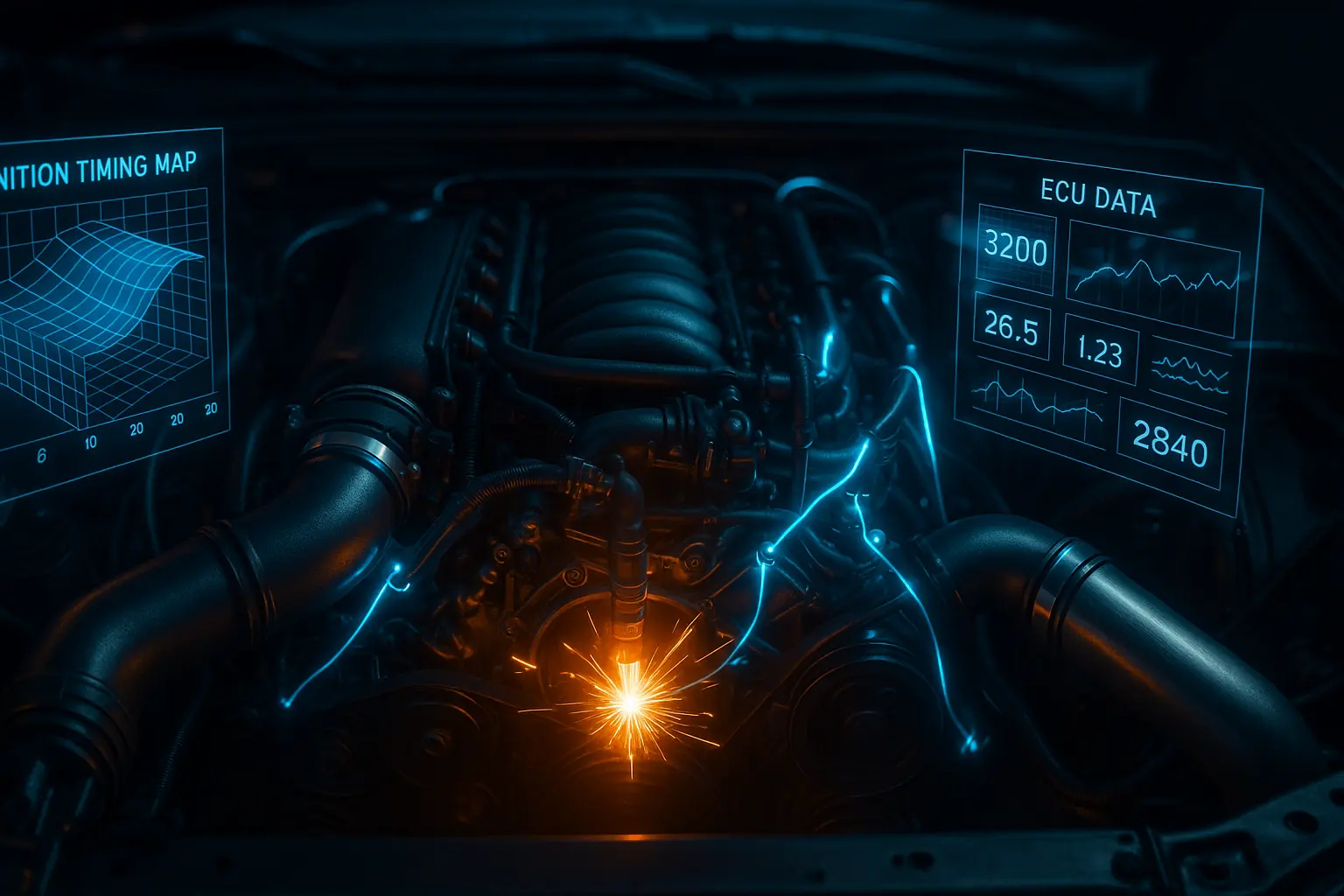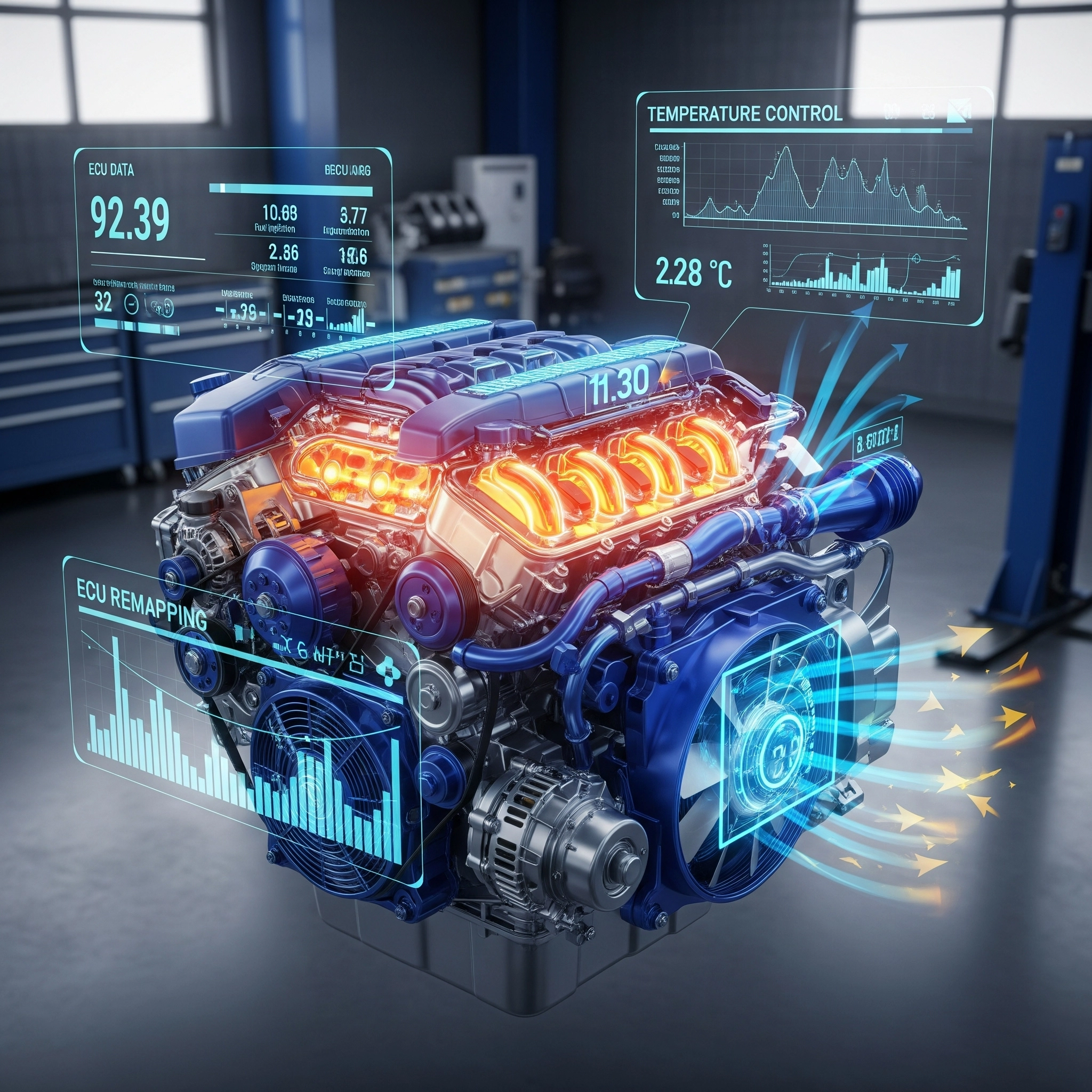ECU Tuning for Pops and Bangs: The Complete Guide
Introduction
For many automotive enthusiasts in India, especially those in their early twenties exploring the world of car modifications, the distinctive “pops and bangs” exhaust sound represents more than just noise—it’s a statement. These exhaust crackles and pops, once exclusively found on high-end performance cars, have now become a popular modification across various vehicle segments thanks to ECU (Engine Control Unit) tuning.
But what exactly is ECU tuning for pops and bangs? Is it legal in India? And most importantly, how does it affect your car’s performance and longevity? This comprehensive guide breaks down everything you need to know about creating that head-turning exhaust note through ECU modifications.
What Are “Pops and Bangs” in Car Exhausts?
Before diving into the technical aspects, let’s understand what we’re talking about. The “pops and bangs” effect refers to the crackling, popping, and sometimes explosive sounds that come from a car’s exhaust when decelerating or shifting gears. These sounds occur when unburnt fuel enters the exhaust system and ignites, creating small explosions.
In high-performance factory cars, these sounds often come naturally due to specific engineering choices. However, in most standard vehicles, they can be artificially induced through ECU tuning.
The Science Behind Exhaust Pops and Bangs
The science behind these attention-grabbing sounds is relatively straightforward:
- Unburnt Fuel: When additional fuel is injected into the engine but not completely combusted
- Exhaust Temperature: When this fuel reaches the hot exhaust system
- Ignition: The heat causes the fuel to ignite, creating the popping sound
In naturally aspirated high-performance engines, this often happens when lifting off the throttle suddenly, as momentary rich air-fuel mixtures are created. In turbocharged engines, it might occur during shifts when the wastegate closes.
Understanding ECU Tuning Basics
The Engine Control Unit (ECU) is essentially your car’s brain. It controls numerous parameters related to engine operation, including:
- Fuel injection timing and quantity
- Ignition timing
- Turbo boost pressure (if applicable)
- Throttle response
- Rev limits
- And many other parameters
ECU tuning involves modifying these factory settings to achieve different performance characteristics. For pops and bangs specifically, tuners modify the fuel and ignition maps to create conditions favorable for controlled exhaust detonations.
How ECU Tuning Creates Pops and Bangs
To create the pop and bang effect through ECU tuning, several modifications are typically made:
- Fuel Overrun
The most common method involves programming the ECU to inject additional fuel during throttle lift-off (known as overrun). This excess fuel enters the exhaust system unburnt, where it ignites.
- Ignition Timing Adjustments
By retarding the ignition timing during specific conditions, combustion can be made to occur later in the cycle, sometimes continuing into the exhaust manifold.
- Cutting Ignition
Some tunes momentarily cut ignition to specific cylinders while allowing fuel to flow, sending raw fuel into the exhaust.
- Anti-Lag Style Programming
More aggressive tunes might incorporate modified anti-lag system principles, originally designed for rally cars to maintain turbo boost.
Types of ECU Tuning for Pops and Bangs
Not all pops and bangs tunes are equal. They generally fall into these categories:
- Mild Crackle Maps
These produce subtle, occasional pops during deceleration. They’re less aggressive and generally pose minimal risk to the exhaust system. This is often recommended for daily drivers and newer enthusiasts.
- Moderate Pop Tunes
These create more consistent and louder pops, often with small bangs during gear shifts. They’re more noticeable but still relatively controlled.
- Aggressive Bang Tunes
These produce loud, gunshot-like explosions and continuous crackling. While certainly attention-grabbing, these tunes place significant stress on exhaust components and can sometimes shoot visible flames.
Potential Risks and Considerations
Before rushing to get your car tuned for pops and bangs, consider these important factors:
- Exhaust System Damage
The explosive nature of pops and bangs places additional stress on your exhaust system:
- Premature deterioration of catalytic converters
- Exhaust manifold cracking
- Muffler and resonator damage
- Failed oxygen sensors
- Engine Considerations
Depending on how the tune is implemented, there could be implications for engine health:
- Additional carbon buildup on valves (especially on direct injection engines)
- Cylinder wall washing (when unburnt fuel removes oil from cylinder walls)
- Increased oil dilution
- Potential turbocharger stress (on turbocharged vehicles)
- Fuel Economy Impact
It should come as no surprise that injecting extra fuel simply to create sounds will hurt your fuel economy—something to consider given rising fuel prices in India.
- Environmental Impact
The unburnt fuel being ignited in the exhaust releases additional pollutants, making this modification less environmentally friendly.
Legal Status in India
This is perhaps the most crucial consideration for young enthusiasts in India. The legal status of exhaust modifications, including pops and bangs tunes, is complex:
Central Motor Vehicle Rules (CMVR)
Under the CMVR, any modification that significantly alters a vehicle’s noise levels or emissions characteristics from its factory specification can be deemed illegal.
RTO Regulations
Regional Transport Offices throughout India have different enforcement levels regarding vehicle modifications. Urban centers like Mumbai, Delhi, and Bangalore tend to have stricter enforcement.
Noise Pollution Rules
The Noise Pollution (Regulation and Control) Rules, 2000, restrict excessive vehicle noise, especially in residential areas and during night hours.
Emissions Compliance
Pops and bangs tunes often involve running rich fuel mixtures that can cause your vehicle to fail emissions tests, potentially creating issues during pollution checks.
Important Note: As of 2025, authorities in several Indian states have increased enforcement against modified exhausts and ECU tunes that produce excessive noise. Penalties can range from fines to vehicle impoundment.
How to Get Pops and Bangs Tuning in India
If you’re still interested in pursuing this modification despite the considerations above, here are your options:
- Professional ECU Remapping
This involves taking your car to a specialized tuning shop with:
- Proper dyno facilities
- Experience with your specific vehicle make and model
- Custom tuning capabilities
Cost in India: ₹15,000-40,000 depending on your vehicle, location, and the tuner’s reputation
- Plug-and-Play Tuning Boxes
These devices intercept and modify signals between your engine sensors and ECU.
Cost in India: ₹8,000-25,000 depending on quality and features
- Flash Tuning Tools
These consumer devices allow you to upload pre-made tunes to your vehicle.
Cost in India: ₹20,000-50,000 for the device plus tune costs
- Pop and Bang Valves
As an alternative to ECU tuning, mechanical pop valves can be installed in the exhaust system.
Cost in India: ₹5,000-15,000 plus installation
Best Vehicles for Pops and Bangs Tuning
While theoretically possible on most modern fuel-injected vehicles, some respond better to pops and bangs tuning than others:
Turbocharged Vehicles
- VW Polo GT TSI
- Skoda Rapid TSI
- Hyundai i20 N Line
- Maruti Suzuki Baleno RS (discontinued but popular in used market)
Naturally Aspirated Options
- Honda City VTEC
- Maruti Suzuki Swift
- Toyota Fortuner
Premium Options
- BMW 3 Series
- Mercedes-Benz A-Class
- Audi A4
Alternatives to ECU Pop and Bang Tunes
If you’re hesitant about ECU tuning, consider these alternatives for enhancing your exhaust note:
- Performance Exhaust Systems
A well-designed aftermarket exhaust can provide a sportier sound without the risks of aggressive ECU tuning.
- Resonator Modifications
Modifying or removing resonators can enhance exhaust notes while remaining more streetable.
- Muffler Options
Different muffler designs can dramatically change your car’s sound character.
- Electronic Exhaust Valves
These allow you to switch between quiet and louder exhaust modes.
Expert Opinions: What Professional Tuners Say
We spoke with several experienced tuners across India to get their perspectives:
Rajesh Sharma, Performance Tuner from Delhi: “I always advise young enthusiasts to start with mild tunes. The aggressive pops and bangs might seem cool at first, but they can lead to expensive repairs down the line. Your car will still sound great with a balanced tune.”
Arjun Menon, Dyno Operator from Bangalore: “About 70% of the catalytic converter failures we see in modified cars are directly related to excessive pops and bangs tunes. If you must have this feature, invest in a proper high-flow cat or decat pipe where legally permitted.”
Vikram Singh, ECU Specialist from Mumbai: “The best tunes are those that enhance overall performance while adding a tasteful soundtrack—not just creating noise. A good tuner should focus on drivability first, with pops and bangs as a secondary feature.”
DIY or Professional? Making the Right Choice
For ECU tuning, and especially for creating pops and bangs effects, professional tuning is strongly recommended. Here’s why:
- Expertise Matters: Professional tuners understand the safe limits for your specific engine
- Equipment Quality: Proper tuning requires specialized equipment for monitoring engine parameters
- Safety Considerations: Improper tuning can lead to engine damage or even catastrophic failure
- Warranty Implications: DIY tuning will almost certainly void your vehicle warranty
Conclusion: Is Pop and Bang Tuning Worth It?
Whether pop and bang tuning is worth it depends entirely on your priorities as a car enthusiast. If you’re looking for that attention-grabbing exhaust note and are willing to accept the potential drawbacks, a mild to moderate pop and bang tune from a reputable professional might be satisfying.
However, if you’re concerned about your vehicle’s longevity, warranty status, legal compliance, and environmental impact, you might want to consider more conventional performance modifications or milder exhaust upgrades.
Ultimately, responsible modification means understanding not just how to make changes to your vehicle, but also why those changes matter and what their broader implications are. Whatever path you choose, prioritize safety, legality, and the long-term health of your vehicle.
FAQs About ECU Tuning for Pops and Bangs
Q: Will pop and bang tuning void my car warranty? A: Yes, most manufacturers will consider ECU modifications as grounds for warranty invalidation, especially if engine or exhaust damage occurs.
Q: Can pop and bang tuning damage my turbocharger? A: Aggressive tunes can potentially increase wear on turbochargers due to elevated exhaust gas temperatures and pressures.
Q: How much horsepower will I gain from a pop and bang tune? A: Pop and bang tuning is primarily for sound effects rather than performance gains. In fact, some aggressive pops and bangs tunes might slightly reduce overall efficiency.
Q: Can I switch between normal and pops/bangs modes? A: Yes, many professional tunes offer map switching capabilities, allowing you to toggle between different modes depending on your driving situation.
Q: Is it possible to remove the tune if I don’t like it? A: Yes, professional tuners should always keep a backup of your stock ECU map that can be restored if desired.
Q: Are pops and bangs tunes available for diesel engines? A: While possible on some modern diesel engines, this modification is much more common and effective on petrol/gasoline engines.
Remember, the world of car modification is about expressing yourself while respecting your vehicle’s engineering limits, local laws, and the community around you. Whatever modifications you choose, aim for quality over quantity, and prioritize responsible enthusiast culture.

